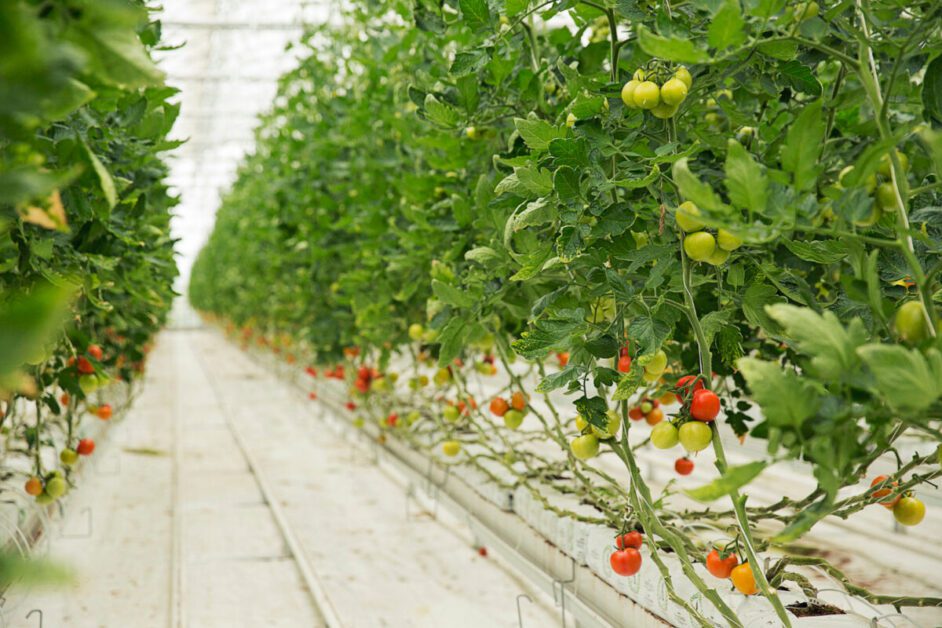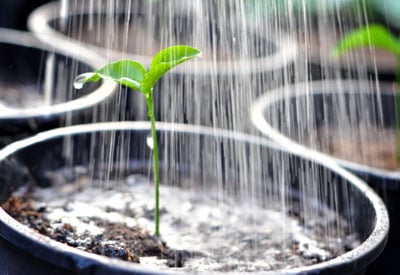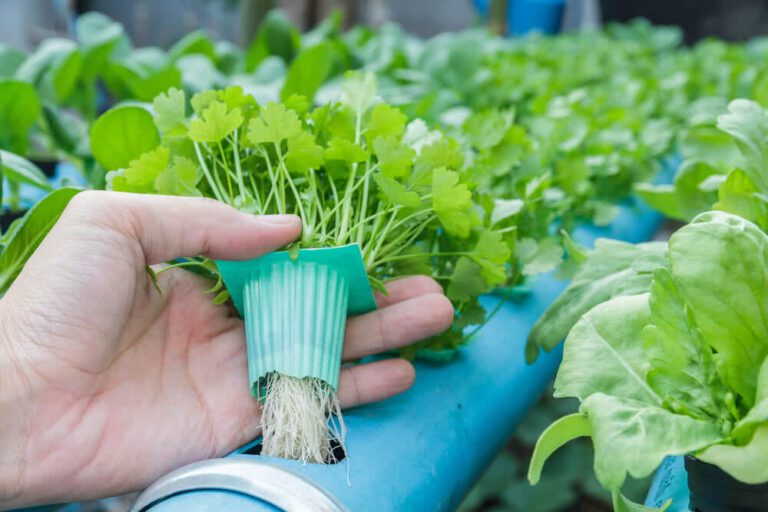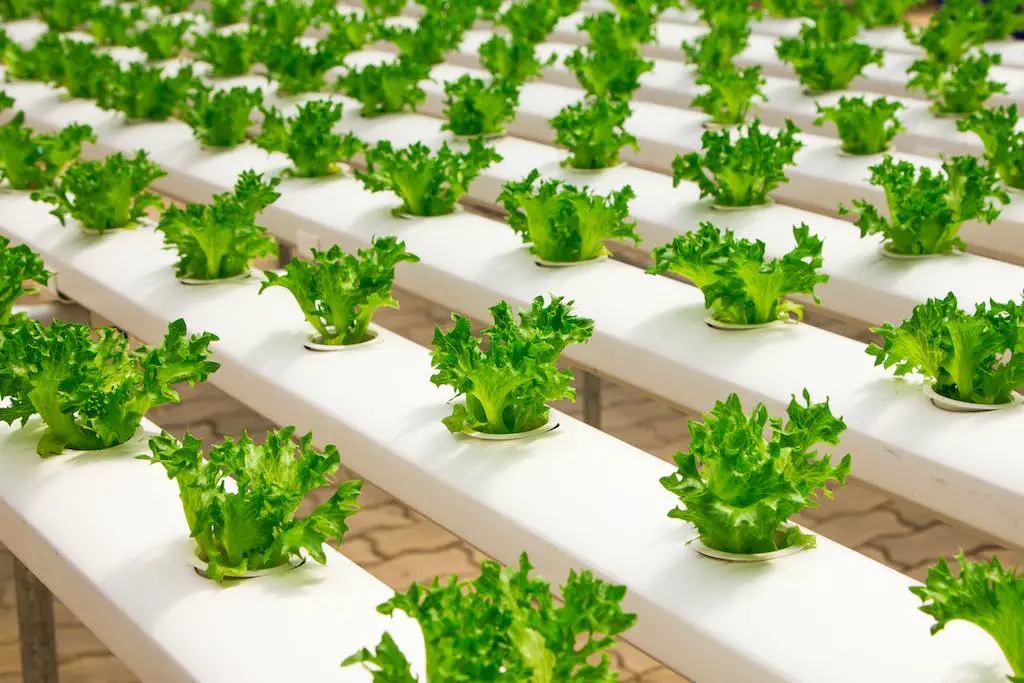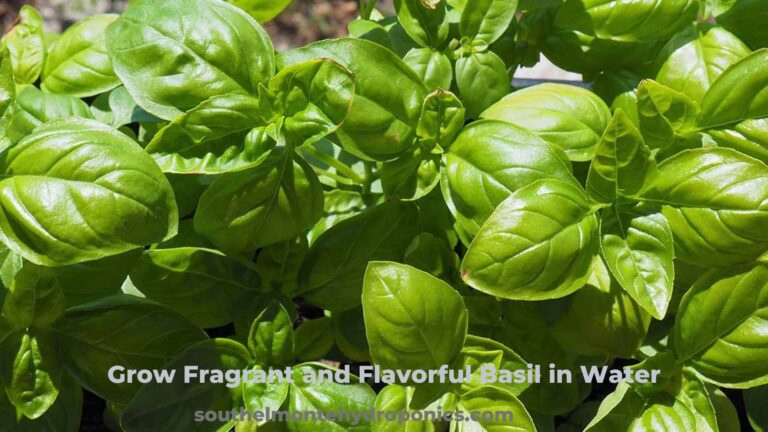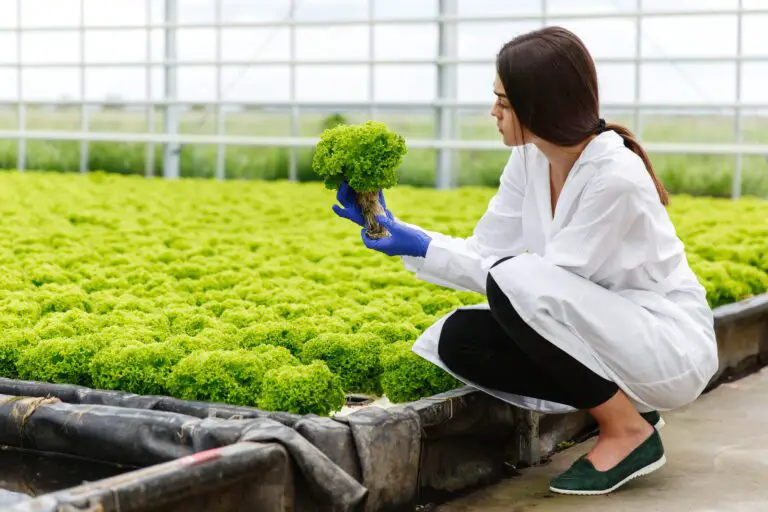Why Your Hydroponic Tomatoes Are Not Turning Red and How to Fix It
Table of Contents
Possible headings for the blog topic “Why Your Hydroponic Tomatoes Are Not Turning Red and How to Fix It” without using any of the restricted words:
Understanding the Factors Affecting Tomato Ripening in Hydroponic Systems
Tomatoes are known for their vibrant red color when fully ripe, but many hydroponic growers find themselves frustrated when their tomatoes don’t reach this desired hue. Understanding the factors that affect tomato ripening in hydroponic systems is crucial for achieving optimal results. While traditional soil-grown tomatoes rely on natural processes for ripening, hydroponic tomatoes require careful management of various factors to ensure proper ripening. Factors such as nutrient management, light requirements, temperature and humidity control, carbon dioxide levels, and pest and disease prevention play a significant role in determining the ripening process in hydroponic tomatoes. By effectively addressing these key factors, growers can increase their chances of successfully ripening tomatoes to that perfect redness.
Importance of Proper Nutrient Management for Tomato Ripening
Nutrient management is a critical component in achieving proper tomato ripening in hydroponic systems. In traditional soil gardening, plants have access to a reservoir of nutrients in the soil, but in hydroponics, growers must provide the necessary nutrients directly to the plant’s root system. Properly balanced nutrient ratios and appropriate levels of essential elements such as nitrogen, phosphorus, potassium, calcium, and magnesium are vital for healthy plant growth and ripening. Imbalances in nutrient levels can lead to delayed or uneven ripening in hydroponic tomatoes. Additionally, nutrient deficiencies or toxicities can affect the overall quality and flavor of the fruit. By carefully monitoring and adjusting nutrient levels, hydroponic growers can enhance the ripening process and ensure the development of high-quality, red tomatoes.
• Nutrient management is crucial for achieving proper tomato ripening in hydroponic systems.
• Hydroponic growers must provide the necessary nutrients directly to the plant’s root system.
• Properly balanced nutrient ratios and essential elements are vital for healthy growth and ripening.
• Imbalances in nutrient levels can lead to delayed or uneven ripening.
• Nutrient deficiencies or toxicities can affect the quality and flavor of the fruit.
• Monitoring and adjusting nutrient levels enhances the ripening process.
1. Understanding the Ripening Process in Hydroponic Tomatoes
Understanding the ripening process in hydroponic tomatoes is essential for any gardener or hydroponics enthusiast. Unlike traditional soil-grown tomatoes, hydroponic tomatoes rely on a controlled environment to achieve optimal ripening. Ripening is a complex physiological process that involves the conversion of starches to sugars, changes in color, and development of flavor and aroma.
One key factor that affects tomato ripening in hydroponic systems is the availability of nutrients. Tomatoes require a balanced supply of macronutrients, such as nitrogen, phosphorus, and potassium, as well as micronutrients like iron, manganese, and zinc. Nutrient imbalances or deficiencies can result in delayed or uneven ripening. It is important to regularly monitor nutrient levels and adjust the nutrient solution accordingly to ensure proper ripening. Additionally, optimizing the nutrient ratio based on the growth stage of the tomato plants can further enhance ripening efficiency in hydroponics.
Proper management of light is another crucial aspect of tomato ripening in hydroponics. Tomatoes require an adequate amount of light, especially in the red and far-red spectrum, to trigger the ripening process. Insufficient light intensity or improper light duration can delay ripening or lead to poor color development. It is essential to provide the appropriate light intensity and duration based on the specific needs of the tomato variety being grown. Regular assessment of the light requirements and utilization of supplemental lighting, if necessary, can help ensure consistent and timely ripening in hydroponic tomatoes.
The ripening process in hydroponic tomatoes is influenced by various other factors, including temperature, humidity, carbon dioxide levels, genetic traits, and pest and disease management. Understanding and effectively managing these factors can significantly impact the ripening process and ultimately the quality and yield of hydroponic tomatoes. In the following sections, we will delve deeper into each of these factors, providing you with valuable insights and practical tips to optimize tomato ripening in your hydroponic system.
• Nutrient availability plays a crucial role in tomato ripening in hydroponics. Regularly monitor and adjust nutrient levels to ensure proper ripening.
• Balancing macronutrients and micronutrients is essential for optimal ripening efficiency in hydroponic tomatoes.
• Light management is another key aspect of tomato ripening. Provide adequate light intensity and duration, especially in the red and far-red spectrum, to trigger the process.
• Insufficient light can delay ripening or result in poor color development. Assess light requirements regularly and consider supplemental lighting if necessary.
• Temperature, humidity, carbon dioxide levels, genetic traits, pest management, and disease control also impact tomato ripening in hydroponics.
• Understanding and effectively managing these factors will ultimately improve the quality and yield of your hydroponic tomatoes.
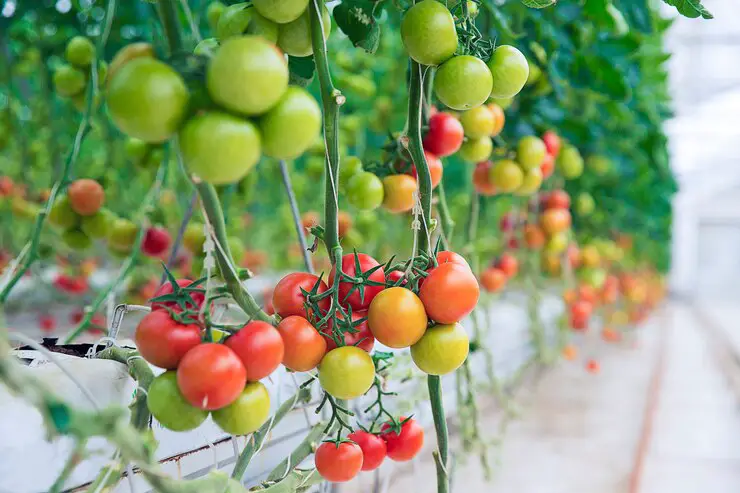
2. Factors Affecting Tomato Ripening in Hydroponic Systems
Tomato ripening in hydroponic systems is a complex process influenced by various factors. One of the key factors affecting tomato ripening is nutrient management. Proper nutrient supply is crucial for the synthesis of pigments, such as lycopene, which give tomatoes their characteristic red color. Imbalances in essential nutrients can hinder the production of these pigments and delay ripening.
In addition to nutrient management, light plays a vital role in tomato ripening. Tomatoes require adequate light exposure to stimulate the production of ethylene, a hormone responsible for triggering the ripening process. Insufficient light levels can impede ethylene production and result in slower ripening. On the other hand, excessive light intensity can cause sunburn and affect ripening quality. Striking the right balance in light intensity and duration is important for optimizing tomato ripening in hydroponic systems.
By understanding and managing these key factors, tomato growers can enhance ripening efficiency and achieve vibrant red tomatoes in their hydroponic systems. It is crucial to monitor and adjust nutrient levels as well as provide suitable light conditions to promote optimal ripening. In the next sections, we will delve deeper into the importance of nutrient management and light requirements for achieving successful tomato ripening from hydroponic systems.
• Nutrient management is a key factor affecting tomato ripening in hydroponic systems
• Proper nutrient supply is crucial for the synthesis of pigments like lycopene, which give tomatoes their red color
• Imbalances in essential nutrients can hinder pigment production and delay ripening
• Light exposure plays a vital role in tomato ripening
• Tomatoes require adequate light to stimulate ethylene production, a hormone responsible for triggering ripening
• Insufficient light levels can impede ethylene production and result in slower ripening
• Excessive light intensity can cause sunburn and affect ripening quality
By understanding and managing these factors:
– Tomato growers can enhance ripening efficiency
– Achieve vibrant red tomatoes in hydroponic systems
It is crucial to:
– Monitor and adjust nutrient levels
– Provide suitable light conditions to promote optimal ripening
3. Importance of Proper Nutrient Management in Tomato Ripening
Proper nutrient management is crucial when it comes to tomato ripening in hydroponic systems. Achieving the desired red color and optimal taste requires a well-balanced nutrient solution that provides all the necessary elements for the tomatoes to thrive.
The primary nutrients that play a key role in tomato ripening include nitrogen, phosphorus, and potassium. Nitrogen promotes the growth of foliage and stems, while phosphorus aids in root development and fruit formation. Potassium, on the other hand, helps regulate water uptake and enhances the overall quality of the tomato fruits. These nutrients, along with secondary and micronutrients such as calcium, magnesium, and iron, should be carefully monitored and adjusted to meet the specific needs of the tomato plants.
In addition to the right nutrient composition, it is essential to ensure proper nutrient availability throughout the different growth stages of the tomatoes. This can be achieved through the use of nutrient solution monitoring systems, which help maintain optimal nutrient levels and prevent nutrient deficiencies or excesses. Regular testing and analysis of the nutrient solution can provide valuable insights into the plant’s nutritional requirements and allow for timely adjustments to maximize tomato ripening. By prioritizing proper nutrient management, gardeners can significantly improve the quality and quantity of their hydroponic tomato harvests.
• Proper nutrient management is crucial for tomato ripening in hydroponic systems.
• Achieving the desired red color and optimal taste requires a well-balanced nutrient solution.
• The primary nutrients that play a key role in tomato ripening are nitrogen, phosphorus, and potassium.
• Nitrogen promotes foliage and stem growth.
• Phosphorus aids in root development and fruit formation.
• Potassium regulates water uptake and enhances overall fruit quality.
• Secondary and micronutrients such as calcium, magnesium, and iron should also be monitored and adjusted as needed.
• Nutrient availability should be ensured throughout different growth stages of tomatoes.
• Nutrient solution monitoring systems can help maintain optimal levels and prevent deficiencies or excesses.
• Regular testing and analysis of the nutrient solution provide valuable insights into plant nutritional requirements.
• Timely adjustments can maximize tomato ripening.
• Proper nutrient management improves the quality and quantity of hydroponic tomato harvests.
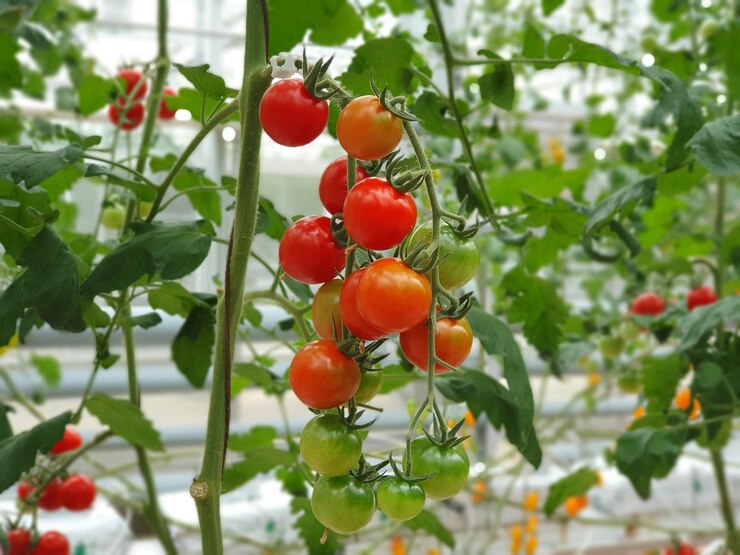
4. Assessing Light Requirements for Ripening Hydroponic Tomatoes
Assessing light requirements is crucial for ensuring proper ripening of hydroponic tomatoes. Light is one of the key factors that influence the ripening process, as it directly affects the production of pigments, flavor compounds, and overall fruit quality.
When it comes to assessing light requirements for ripening hydroponic tomatoes, understanding the specific needs of the plant is essential. Tomatoes are known as “long-day” plants, meaning they require around 14 to 16 hours of light per day to promote optimal fruit ripening. However, providing excessive light can lead to sunburn or increased leaf temperature, negatively impacting the plant’s overall health. It is important to strike a balance by providing the right intensity and duration of light to ensure successful ripening.
• Tomatoes are “long-day” plants, requiring 14 to 16 hours of light per day for optimal ripening
• Excessive light can cause sunburn or increased leaf temperature, negatively affecting plant health
• Striking a balance between intensity and duration of light is crucial for successful ripening
| Stage of Ripening | Light Requirements |
|---|---|
| Seedling | 12-16 hours/day, 200-400 µmol/m²/s |
| Vegetative Growth | 14-18 hours/day, 400-600 µmol/m²/s |
| Flowering | 12-14 hours/day, 600-800 µmol/m²/s |
| Fruit Setting | 10-12 hours/day, 800-1000 µmol/m²/s |
| Fruit Ripening | 8-10 hours/day, 1000-1200 µmol/m²/s |
5. Maintaining Optimal Temperature and Humidity for Tomato Ripening
Maintaining optimal temperature and humidity is crucial for the successful ripening of hydroponic tomatoes. Tomatoes are warm-season fruits that require specific temperature and humidity conditions to trigger the ripening process.
For temperature, it is recommended to maintain a range between 68°F (20°C) and 75°F (24°C) during the day, with a slight drop of a few degrees at night. Sudden temperature fluctuations can negatively impact the ripening process and result in uneven or delayed ripening. Therefore, it is important to provide a stable and consistent temperature environment for your hydroponic tomato plants.
In terms of humidity, tomatoes prefer a relative humidity level of around 80% during the day and 60-70% at night. High humidity levels help prevent excessive moisture loss from the fruit and promote optimal ripening. However, it is important to avoid excessive humidity, as it can lead to the development of fungal diseases. A well-ventilated growing environment and proper air circulation can help regulate humidity levels and prevent any issues related to excessive moisture. By carefully monitoring the temperature and humidity conditions, you can create an ideal environment for efficient and timely tomato ripening in your hydroponic system.
• Maintain a temperature range between 68°F (20°C) and 75°F (24°C) during the day
• Allow for a slight drop in temperature at night to mimic natural conditions
• Avoid sudden fluctuations in temperature to ensure even and timely ripening
• Provide a stable and consistent temperature environment for hydroponic tomato plants
• Aim for a relative humidity level of around 80% during the day
• Keep humidity levels between 60-70% at night
• High humidity helps prevent moisture loss from the fruit and promotes optimal ripening
• Be cautious of excessive humidity, as it can lead to fungal diseases
– Ensure proper ventilation and air circulation to regulate humidity levels
By carefully monitoring both temperature and humidity conditions, you can create an ideal environment that supports efficient and timely tomato ripening in your hydroponic system.
6. The Role of Carbon Dioxide in Tomato Ripening
Carbon dioxide (CO2) plays a vital role in the ripening process of hydroponic tomatoes. As the tomatoes develop and mature, they naturally produce a hormone called ethylene. This hormone triggers the ripening process and is essential for the tomatoes to turn red and develop their characteristic flavor and sweetness.
During the ripening stage, the tomatoes undergo several physiological changes. They begin to break down chlorophyll, the green pigment responsible for the tomato’s color, and start to produce carotenoids, the pigments responsible for the vibrant red color of ripe tomatoes. The presence of an adequate amount of carbon dioxide is crucial for these processes to occur efficiently.
Carbon dioxide is required for the synthesis of carotenoids in tomatoes. It serves as a raw material for the production of these pigments, which contribute to the attractive red color of ripe tomatoes. In addition, carbon dioxide influences the activity of certain enzymes involved in the ripening process, ensuring that the tomatoes mature evenly and develop a desirable taste and texture.
• Carbon dioxide is necessary for the synthesis of carotenoids in tomatoes.
• Carotenoids are responsible for the vibrant red color of ripe tomatoes.
• Carbon dioxide affects the activity of enzymes involved in tomato ripening.
• Adequate levels of carbon dioxide help ensure even maturation and desirable taste and texture.
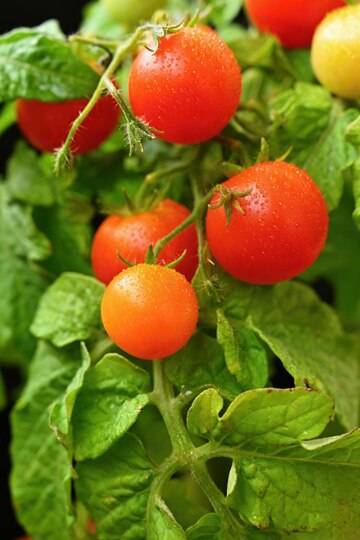
7. Recognizing Common Nutrient Deficiencies that Hinder Tomato Ripening
Common nutrient deficiencies can significantly hinder tomato ripening in hydroponic systems. One common deficiency that often affects tomato plants is a lack of potassium. Potassium is essential for the process of photosynthesis and the production of sugars, which are crucial for fruit ripening. Without sufficient potassium, tomatoes may remain green and fail to develop their characteristic vibrant red color.
Another nutrient deficiency that can impede tomato ripening is a shortage of magnesium. Magnesium is vital for chlorophyll production and the synthesis of enzymes involved in plant metabolism. When magnesium levels are insufficient, photosynthesis is compromised, leading to reduced sugar production and delayed ripening. This deficiency is often evident in plants exhibiting yellowing or browning of older leaves, a characteristic known as chlorosis.
• Lack of potassium can hinder tomato ripening
• Potassium is essential for photosynthesis and sugar production
• Without sufficient potassium, tomatoes may remain green and not turn red
• Shortage of magnesium can also impede tomato ripening
• Magnesium is needed for chlorophyll production and enzyme synthesis
• Insufficient magnesium leads to compromised photosynthesis and delayed ripening
• Chlorosis, or yellowing/browning of older leaves, is a common symptom
8. Balancing Nutrient Ratios for Enhanced Tomato Ripening
Balancing nutrient ratios is crucial for enhancing tomato ripening in hydroponic systems. Achieving optimal nutrient levels not only promotes fruit development but also improves the quality and flavor of the tomatoes. To strike the right balance, it is essential to understand the specific nutrient requirements of hydroponic tomatoes during the ripening stage.
Tomatoes have specific macronutrient and micronutrient needs during ripening, and deviations from these requirements can lead to delayed or incomplete ripening. Nitrogen (N), phosphorus (P), and potassium (K) are the primary macronutrients that influence the ripening process. While nitrogen promotes vegetative growth, excessive levels can delay fruit ripening. Phosphorus plays a critical role in energy transfer and stimulates flower initiation and fruit set. Adequate potassium ensures proper fruit size, color, and flavor development. Achieving the appropriate balance of these nutrients is essential to support the ripening process effectively. Additionally, micronutrients such as iron (Fe), manganese (Mn), and boron (B) are vital for the synthesis of pigments and enzymes involved in ripening. Proper analysis of nutrient levels and adjustment based on the specific needs of your tomato cultivar is key to achieving a successful balance and enhancing tomato ripening in hydroponic systems.
• Nitrogen (N), phosphorus (P), and potassium (K) are the primary macronutrients that influence tomato ripening
• Excessive nitrogen levels can delay fruit ripening
• Phosphorus is important for energy transfer and stimulates flower initiation and fruit set
• Adequate potassium ensures proper fruit size, color, and flavor development
• Micronutrients such as iron (Fe), manganese (Mn), and boron (B) are vital for pigment synthesis and enzyme activity during ripening
• Proper analysis of nutrient levels is crucial to adjust them based on specific tomato cultivar needs
| Nutrient | Function | Macronutrients/Micronutrients |
|---|---|---|
| Nitrogen (N) | Leaf growth, chlorophyll production | Macronutrient |
| Phosphorus (P) | Root development, fruiting | Macronutrient |
| Potassium (K) | Overall plant health, fruit quality | Macronutrient |
| Calcium (Ca) | Cell wall structure, prevents blossom end rot | Macronutrient |
| Magnesium (Mg) | Chlorophyll production, enzyme activation | Macronutrient |
| Sulfur (S) | Protein synthesis, overall plant health | Macronutrient |
| Iron (Fe) | Chlorophyll synthesis, enzyme functions | Micronutrient |
| Zinc (Zn) | Enzyme activation, hormone regulation | Micronutrient |
| Manganese (Mn) | Photosynthesis, enzyme activation | Micronutrient |
| Copper (Cu) | Enzyme activation, chlorophyll production | Micronutrient |
| Boron (B) | Pollen germination, cell wall formation | Micronutrient |
| Molybdenum (Mo) | Nitrogen metabolism, enzyme activation | Micronutrient |
9. Identifying Pest and Disease Issues that Delay Tomato Ripening
Pest and disease issues can wreak havoc on your hydroponic tomato plants, causing delays in ripening and affecting overall plant health. Identifying these problems early on is crucial to prevent further damage and ensure a successful harvest.
One common pest that can delay tomato ripening is the tomato hornworm. These large green caterpillars can devour foliage, flowers, and even small fruit, stunting the plant’s growth and reducing its ability to ripen tomatoes. Keep an eye out for their telltale signs, such as chewed leaves and droppings, and manually remove them from your plants if you spot any. Additionally, beneficial insects like ladybugs and lacewings can help control the population of hornworms and other pests naturally.
Diseases like early blight and late blight can also hinder tomato ripening. Early blight, caused by the fungus Alternaria solani, manifests as dark spots on the leaves, stems, and fruits. It can spread quickly in humid conditions, leading to defoliation and reduced fruit production. Late blight, caused by the oomycete Phytophthora infestans, is characterized by dark, water-soaked lesions on the foliage, often accompanied by a white, fuzzy growth on the undersides of leaves. Both diseases can be managed by regularly inspecting your plants for symptoms, providing good air circulation, and practicing proper sanitation by removing affected plant parts.
• Regularly inspect your plants for signs of tomato hornworms, such as chewed leaves and droppings
• Manually remove any tomato hornworms you find on your plants
• Encourage the presence of beneficial insects like ladybugs and lacewings to control the population of pests naturally
• Watch out for symptoms of early blight, including dark spots on leaves, stems, and fruits
• Monitor humidity levels to prevent the spread of early blight
• Practice good air circulation by spacing out your tomato plants properly
• Remove affected plant parts to prevent the spread of diseases like early blight and late blight
• Look for dark, water-soaked lesions on foliage as a sign of late blight infection
• Be vigilant about removing infected plant parts promptly
• Consider using fungicides or other disease management strategies if necessary.
10. Proper Pruning Techniques for Increasing Tomato Ripening Efficiency
Proper pruning techniques can greatly enhance tomato ripening efficiency in hydroponic systems. By strategically removing certain branches and shoots, gardeners can redirect the plant’s energy towards fruit production and ripening. Pruning also improves air circulation and light penetration, which are crucial factors in promoting ripening.
One key method is known as “suckering,” which involves removing the side shoots that develop in the leaf axils of tomato plants. These shoots, if left unchecked, can divert nutrients and energy away from the developing fruits. By regularly removing these suckers, gardeners ensure that the plant’s resources are focused on fruit production, leading to faster and more consistent ripening.
In addition to suckering, it is also advisable to remove any yellow or diseased leaves from the tomato plants. These leaves often act as energy sinks, drawing resources away from the ripening process. By keeping the plant clear of any dead or yellow foliage, gardeners allow for better nutrient distribution and minimize the risk of disease.
• Suckering is a key pruning technique that involves removing side shoots from tomato plants
• Removing suckers redirects the plant’s energy towards fruit production and ripening
• Regularly removing suckers leads to faster and more consistent ripening of tomatoes
• Yellow or diseased leaves should be removed from tomato plants to improve nutrient distribution
• Removing dead or yellow foliage minimizes the risk of disease in tomato plants
11. Understanding the Impact of Genetics on Tomato Ripening
Genetics play a significant role in the ripening process of tomatoes, even in hydroponic systems. The traits and characteristics of a tomato variety are determined by its genetic makeup, including the genes responsible for ripening. Understanding the impact of genetics on tomato ripening can help gardeners make informed decisions when choosing the right tomato varieties for their hydroponic setups.
Certain genetic factors can affect the rate and quality of tomato ripening. One crucial genetic factor is the level of ethylene production. Ethylene is a natural plant hormone that triggers the ripening process. Some tomato varieties are known to produce high levels of ethylene, resulting in faster and more uniform ripening. On the other hand, other varieties may have lower ethylene production, leading to slower and less consistent ripening. Gardeners should consider these genetic variations and choose tomato varieties that align with their desired ripening timeline and preferences.
• Genetics play a significant role in the ripening process of tomatoes, even in hydroponic systems.
• The traits and characteristics of a tomato variety are determined by its genetic makeup, including the genes responsible for ripening.
• Understanding the impact of genetics on tomato ripening can help gardeners make informed decisions when choosing the right tomato varieties for their hydroponic setups.
• One crucial genetic factor that affects tomato ripening is the level of ethylene production.
• Ethylene is a natural plant hormone that triggers the ripening process.
• Some tomato varieties produce high levels of ethylene, resulting in faster and more uniform ripening.
• Other varieties may have lower ethylene production, leading to slower and less consistent ripening.
• Gardeners should consider these genetic variations when selecting tomato varieties to align with their desired ripening timeline and preferences.
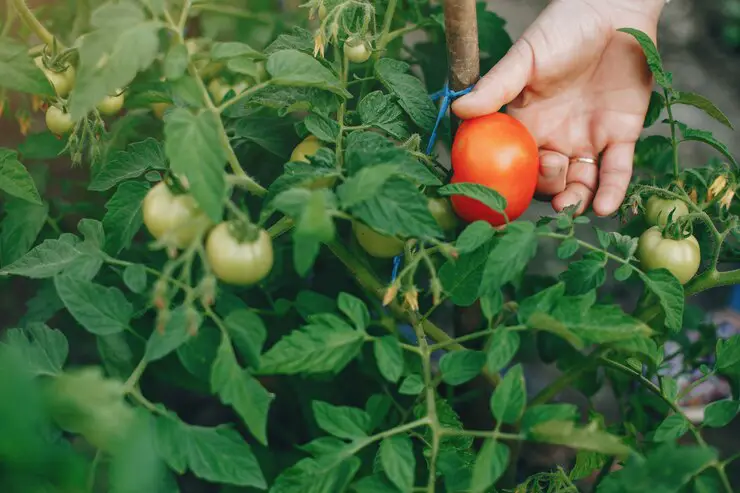
12. Enhancing Tomato Ripening through Ethylene Management
Enhancing Tomato Ripening through Ethylene Management
Ethylene is a naturally occurring hormone in plants that plays a crucial role in the ripening process. When it comes to enhancing tomato ripening in hydroponic systems, understanding and managing ethylene levels can make a significant difference. Ethylene is a gaseous hormone that acts as a signaling molecule, triggering various physiological changes in the plant, including the ripening of fruits.
To enhance tomato ripening through ethylene management, it is important to create an optimal ethylene environment. One way to achieve this is by using ethylene-releasing compounds or generators. These compounds slowly release ethylene gas, simulating the natural ripening process. By carefully controlling the release of ethylene, you can ensure that the tomatoes ripen uniformly and at the desired pace. Additionally, it is important to monitor and adjust the concentration of ethylene to prevent overripening or premature rotting of the fruits.
By managing ethylene levels effectively, you can enhance the ripening process of hydroponic tomatoes. However, it is crucial to strike a balance and not exceed the optimal ethylene levels, as it can lead to undesirable effects such as fruit damage or reduced shelf life. Proper understanding and control of ethylene management can significantly contribute to the production of vibrant and fully ripened tomatoes in your hydroponic system.
• Ethylene is a naturally occurring hormone in plants that plays a crucial role in the ripening process.
• Understanding and managing ethylene levels can enhance tomato ripening in hydroponic systems.
• Ethylene acts as a signaling molecule, triggering physiological changes in the plant, including fruit ripening.
• Creating an optimal ethylene environment can be achieved through the use of ethylene-releasing compounds or generators.
• These compounds slowly release ethylene gas, simulating the natural ripening process.
• Carefully controlling the release of ethylene ensures uniform and desired pace of tomato ripening.
• Monitoring and adjusting ethylene concentration prevents overripening or premature rotting of fruits.
• Effective management of ethylene levels enhances the ripening process of hydroponic tomatoes.
• It is important to strike a balance and not exceed optimal ethylene levels to avoid undesirable effects such as fruit damage or reduced shelf life.
• Proper understanding and control of ethylene management contributes to vibrant and fully ripened tomatoes in hydroponic systems.
13. Evaluating Different Tomato Varieties for Improved Ripening
Tomatoes are a popular choice for hydroponic systems due to their fast growth and ability to thrive in controlled environments. However, not all tomato varieties are created equal when it comes to ripening. Evaluating different tomato varieties is crucial for improving the ripening process and obtaining the desired red color.
One important factor to consider when evaluating tomato varieties is their ripening time. Some varieties are known for ripening quickly, while others may take longer. It is important to choose a variety that aligns with your desired timeline and harvest schedule. Additionally, consider the specific requirements of each variety, such as light intensity, temperature, and nutrient needs, as these factors can affect the ripening process.
Another aspect to evaluate is the flavor and texture of the tomatoes. Different tomato varieties have unique taste profiles, ranging from sweet and tangy to rich and savory. Additionally, the texture can vary from firm to soft, which can influence the culinary applications of the tomatoes. Take into account the intended use of the tomatoes and choose a variety that complements your preferences and culinary needs.
Evaluating different tomato varieties for improved ripening goes beyond just the visual aspect. By selecting varieties with specific ripening times and considering their flavor and texture, you can enhance the overall quality of your hydroponic tomatoes. The next step is to explore supplementary techniques to further accelerate the ripening process and achieve the vibrant red color that gardeners strive for in their harvest.
• Consider the ripening time of different tomato varieties and choose one that aligns with your desired timeline and harvest schedule.
• Take into account the specific requirements of each variety, such as light intensity, temperature, and nutrient needs, as these factors can affect the ripening process.
• Evaluate the flavor profiles of different tomato varieties, ranging from sweet and tangy to rich and savory, to find one that suits your preferences and culinary needs.
• Consider the texture of tomatoes, which can vary from firm to soft, when selecting a variety for specific culinary applications.
• Remember that evaluating tomato varieties for improved ripening goes beyond just visual appearance; consider factors like flavor and texture as well.
• Explore supplementary techniques to further accelerate the ripening process and achieve vibrant red color in hydroponic tomatoes.
14. Exploring Supplementary Techniques to Accelerate Tomato Ripening
Supplementary techniques can play a crucial role in accelerating tomato ripening in a hydroponic system. One such technique is the application of plant growth regulators, specifically ethylene. Ethylene is a natural plant hormone that is responsible for the initiation of fruit ripening in many plants, including tomatoes. By applying exogenous ethylene gas, growers can effectively hasten the ripening process and achieve desirable red tomatoes.
Another technique to consider is the use of specific lighting conditions during the ripening phase. Research has shown that exposing tomatoes to red and blue light spectrums can stimulate the production of carotenoids, which are essential for color development. By adjusting the light spectrum and intensity, growers can optimize the ripening process and ensure the production of vibrant, red tomatoes. Additionally, aligning the lighting cycle with the natural daylight hours can mimic the sun’s influence on ripening and enhance the overall quality of the fruit.
• Applying exogenous ethylene gas can accelerate tomato ripening
• Ethylene is a natural plant hormone responsible for fruit ripening
• Use of specific lighting conditions, such as red and blue light spectrums, can stimulate carotenoid production
• Carotenoids are essential for color development in tomatoes
• Adjusting light spectrum and intensity can optimize the ripening process
• Aligning lighting cycle with natural daylight hours mimics sun’s influence on ripening
and enhances fruit quality
15. Monitoring and Adjusting pH Levels for Optimal Tomato Ripening
Monitoring and adjusting pH levels is crucial for optimal tomato ripening in hydroponic systems. The pH of the nutrient solution directly affects the availability and uptake of essential nutrients by the plants, which in turn influences their overall growth and development. Tomatoes thrive in slightly acidic conditions, with a pH range between 5.5 and 6.5 being ideal.
To ensure the pH levels are within the desired range, regular monitoring is necessary. This can be done using a pH meter or test strips specifically designed for hydroponic systems. It is recommended to check pH levels at least once a week or more frequently if necessary. If the pH deviates from the desired range, adjustments should be made promptly to maintain optimal conditions for tomato ripening.
• Regular monitoring of pH levels is crucial for optimal tomato ripening
• pH directly affects nutrient availability and uptake by the plants
• Tomatoes thrive in slightly acidic conditions, with a pH range between 5.5 and 6.5 being ideal
• Use a pH meter or test strips designed for hydroponic systems to monitor pH levels
• Check pH levels at least once a week, or more frequently if necessary
• Promptly make adjustments if the pH deviates from the desired range
16. Troubleshooting Tips for Overcoming Tomato Rip
There can be nothing more frustrating for a hydroponic gardener than waiting patiently for their tomatoes to ripen, only to find them stubbornly staying green. Luckily, there are several troubleshooting tips that can help overcome this issue and ensure a bountiful harvest of perfectly ripe, vibrant red tomatoes.
One common culprit behind slow ripening is inadequate nutrient management. Tomatoes require a balanced blend of essential nutrients, and any deficiencies can significantly hinder the ripening process. Make sure to regularly test the nutrient solution and adjust accordingly to ensure optimal nutrient levels for your plants. Additionally, pay attention to the ratios of nutrients, as an imbalance can also delay ripening. Investing in a high-quality nutrient solution specifically formulated for tomatoes can greatly enhance their ripening capabilities.
Another factor to consider is the presence of pests and diseases that may be sabotaging the ripening process. Insects such as aphids, whiteflies, and spider mites can weaken the plant and impair ripening. Use natural pest control methods or insecticidal soaps to tackle these pesky intruders and ensure that your tomatoes have a fighting chance to reach their full ripeness potential. Additionally, keep a watchful eye for any signs of disease, such as blight or fusarium wilt, and promptly address them to prevent further deterioration of the fruit.
By addressing issues with nutrient management and combating pests and diseases, you can troubleshoot and overcome the obstacles that may impede tomato ripening in your hydroponic system. Stay tuned for more insightful tips and techniques to elevate your hydroponic tomato gardening experience!
• Regularly test the nutrient solution and adjust accordingly to ensure optimal nutrient levels for your plants.
• Pay attention to the ratios of nutrients, as an imbalance can delay ripening.
• Invest in a high-quality nutrient solution specifically formulated for tomatoes.
• Use natural pest control methods or insecticidal soaps to tackle pests such as aphids, whiteflies, and spider mites.
• Keep a watchful eye for signs of disease, such as blight or fusarium wilt, and promptly address them.
Why are my hydroponic tomatoes not turning red?
There could be several factors affecting the ripening process in hydroponic tomatoes, such as improper nutrient management, insufficient light, incorrect temperature and humidity levels, nutrient deficiencies, pest and disease issues, genetic factors, or poor ethylene management.
How can I ensure proper nutrient management for tomato ripening in hydroponic systems?
Proper nutrient management is crucial for tomato ripening. Regularly monitor and adjust nutrient ratios, maintain optimal pH levels, and provide a balanced nutrient solution to promote healthy ripening.
What light requirements are necessary for ripening hydroponic tomatoes?
Tomatoes require adequate light to ripen properly. Ensure your hydroponic system provides sufficient artificial light, ideally with a spectrum that includes both red and blue wavelengths, for at least 12-14 hours per day.
How can I maintain optimal temperature and humidity levels for tomato ripening?
Maintaining temperature between 68-77°F (20-25°C) and relative humidity around 80% can help promote tomato ripening. Proper ventilation and climate control systems are essential to regulate these factors in a hydroponic environment.
How does carbon dioxide affect tomato ripening in hydroponic systems?
Carbon dioxide (CO2) levels play a role in tomato ripening. Increasing CO2 concentrations, within a range of 800-1200 parts per million (ppm), can help accelerate the ripening process and enhance fruit quality.
What are some common nutrient deficiencies that hinder tomato ripening?
Nutrient deficiencies, such as nitrogen, phosphorus, potassium, calcium, or magnesium deficiencies, can hinder tomato ripening. Regularly monitor nutrient levels and address any deficiencies promptly through appropriate nutrient supplementation.
How can I identify and address pest and disease issues that delay tomato ripening?
Regularly inspect plants for signs of pests or diseases, such as aphids, whiteflies, or fungal infections. Implement proper pest management strategies, such as using beneficial insects or organic pesticides, and promptly treat any disease outbreaks to prevent delays in ripening.
Are there any pruning techniques that can increase tomato ripening efficiency?
Yes, proper pruning techniques can enhance tomato ripening efficiency. Remove any suckers or excess foliage that may shade the developing fruits, allowing better light penetration and airflow to promote ripening.
How do genetics impact tomato ripening in hydroponic systems?
The genetics of tomato varieties can affect the ripening process. Some varieties naturally ripen faster or have better color development. Choose varieties specifically bred for hydroponic systems and consider their ripening characteristics when selecting seeds or transplants.
How can I enhance tomato ripening through ethylene management?
Ethylene is a plant hormone that promotes ripening. To enhance tomato ripening, you can use ethylene-releasing compounds or expose the tomatoes to ethylene gas in a controlled manner. However, use caution as excessive ethylene exposure can lead to overripening or spoilage.
Are there certain tomato varieties that ripen faster in hydroponic systems?
Yes, some tomato varieties are known to ripen faster in hydroponic systems. Look for varieties specifically bred for greenhouse or hydroponic cultivation, as they often have shorter ripening periods and better adaptability to controlled environments.
Can supplementary techniques be used to accelerate tomato ripening?
Yes, there are supplementary techniques that can accelerate tomato ripening. These include techniques such as girdling, bagging, or using ripening agents like calcium carbide or ethylene gas. However, consult with experts or follow recommended guidelines before using these techniques.
How important is monitoring and adjusting pH levels for optimal tomato ripening?
Monitoring and adjusting pH levels is crucial for optimal tomato ripening. Tomatoes prefer a slightly acidic pH range of 5.5-6.5. Regularly test the pH of your nutrient solution and adjust it accordingly to ensure proper nutrient uptake and ripening.
What are some troubleshooting tips for overcoming tomato ripening issues?
If you are facing tomato ripening issues, consider factors such as nutrient deficiencies, light intensity or duration, temperature and humidity levels, pest and disease control, pruning techniques, genetic factors, ethylene management, and pH levels. Troubleshoot each of these factors to identify and address any potential problems that might be hindering tomato ripening.

Ankit Garg is a seasoned writer at South El Monte Hydroponics, blending his passion for agriculture with a penchant for storytelling. With a degree in Agricultural Sciences from a prestigious institution, Ankit’s expertise lies in hydroponics, sustainable farming, and innovative cultivation techniques. His keen interest in exploring the intersection of technology and agriculture has led him to delve deep into the realm of hydroponic farming, where he thrives in uncovering the latest advancements and sharing insights through his engaging prose. Ankit’s dedication to promoting eco-friendly and efficient farming practices through his writing has earned him recognition within the agricultural community and beyond.

